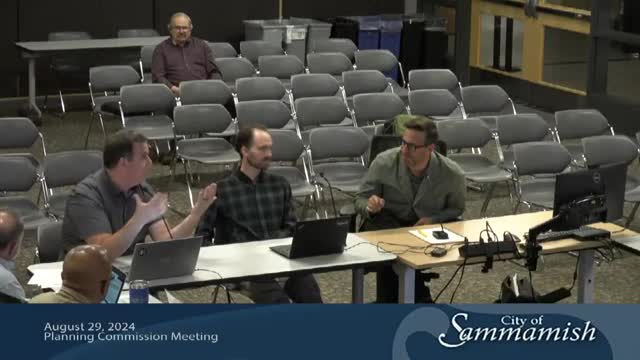Housing Debate Sparks Call for Green Roofs and Design Standards
August 29, 2024 | Sammamish City, King County, Washington
This article was created by AI summarizing key points discussed. AI makes mistakes, so for full details and context, please refer to the video of the full meeting. Please report any errors so we can fix them. Report an error »

In a recent government meeting, officials discussed the integration of green roofs and architectural guidelines for new housing developments, particularly focusing on the emerging trend of middle housing. The conversation highlighted the need for innovative design solutions that not only enhance aesthetic appeal but also address environmental concerns.
One key point raised was the potential for incentivizing developers to incorporate green roofs into their projects. Officials noted that while green roofs are typically seen in larger multifamily or commercial buildings, there is an opportunity to promote them in smaller developments, such as cottages. This could provide benefits like stormwater management and improved urban ecology.
Participants expressed concerns about the visual compatibility of new housing with existing neighborhoods. There was a consensus on the importance of maintaining a cohesive architectural style to avoid the pitfalls seen in other cities, such as Seattle, where mismatched designs have led to community dissatisfaction. Suggestions included implementing guidelines for pitched roofs and material palettes to ensure that new constructions blend seamlessly with their surroundings.
The meeting concluded with a commitment to further explore these ideas and return with more detailed proposals, emphasizing the balance between flexibility for developers and the need for community-oriented design. As the city moves forward with these housing initiatives, the integration of sustainable practices and aesthetic considerations will be crucial in shaping the urban landscape.
One key point raised was the potential for incentivizing developers to incorporate green roofs into their projects. Officials noted that while green roofs are typically seen in larger multifamily or commercial buildings, there is an opportunity to promote them in smaller developments, such as cottages. This could provide benefits like stormwater management and improved urban ecology.
Participants expressed concerns about the visual compatibility of new housing with existing neighborhoods. There was a consensus on the importance of maintaining a cohesive architectural style to avoid the pitfalls seen in other cities, such as Seattle, where mismatched designs have led to community dissatisfaction. Suggestions included implementing guidelines for pitched roofs and material palettes to ensure that new constructions blend seamlessly with their surroundings.
The meeting concluded with a commitment to further explore these ideas and return with more detailed proposals, emphasizing the balance between flexibility for developers and the need for community-oriented design. As the city moves forward with these housing initiatives, the integration of sustainable practices and aesthetic considerations will be crucial in shaping the urban landscape.
View full meeting
This article is based on a recent meeting—watch the full video and explore the complete transcript for deeper insights into the discussion.
View full meeting
